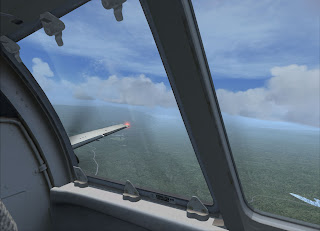PSA airlines configured the L1011 to have a lounge area for passengers below the main pax cabin.
The Rolls Royce RB211 engine was designed for the L1011 and is the only engine offered through it's production life.
The L1011 was the first cockpit designed will all curved windscreen glass.
The LD1011 is the only plane designed with Direct Lift Control (DLC) which used the spoilers and locked out the stabilizer to control altitude on the approach. Pushing or pulling the yoke on approach did not effect a change in pitch it affected the rate of descent only.


















































